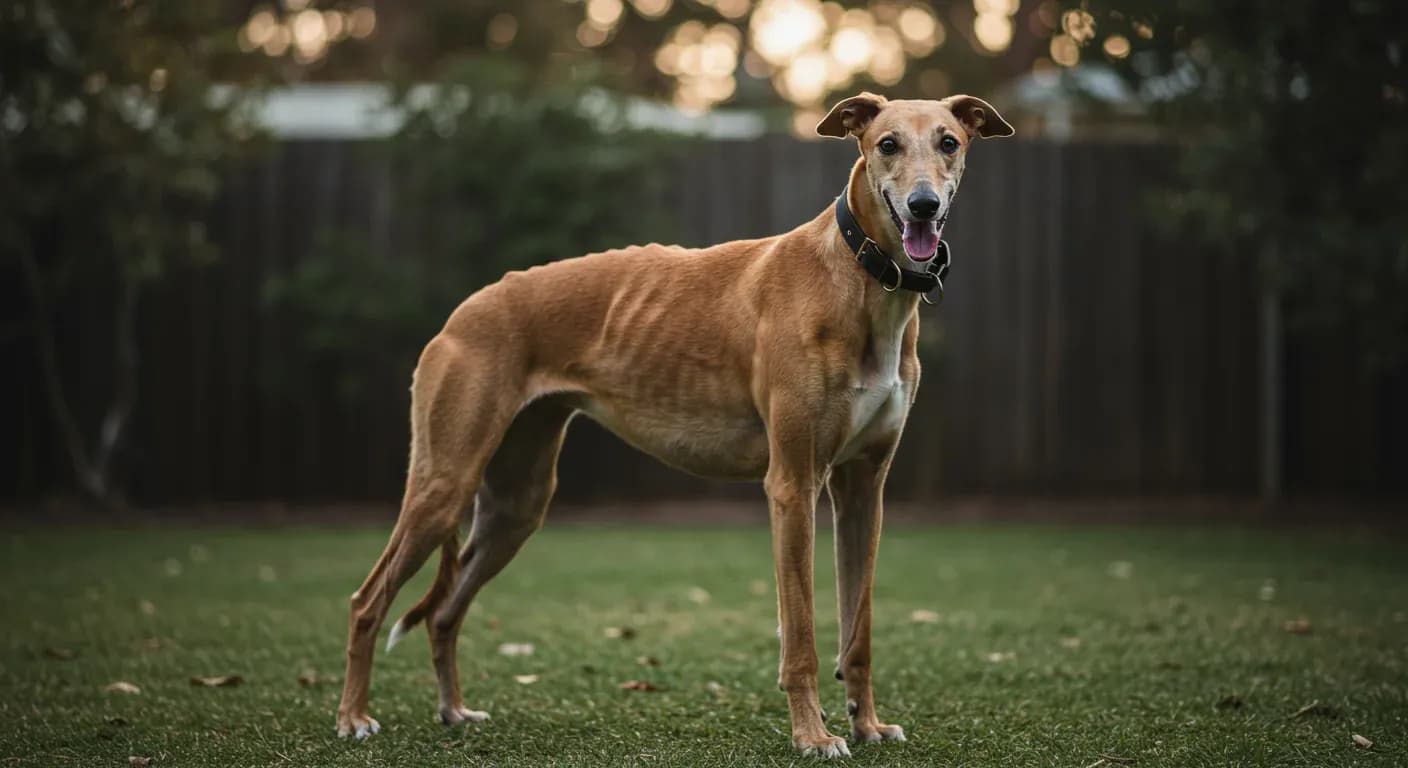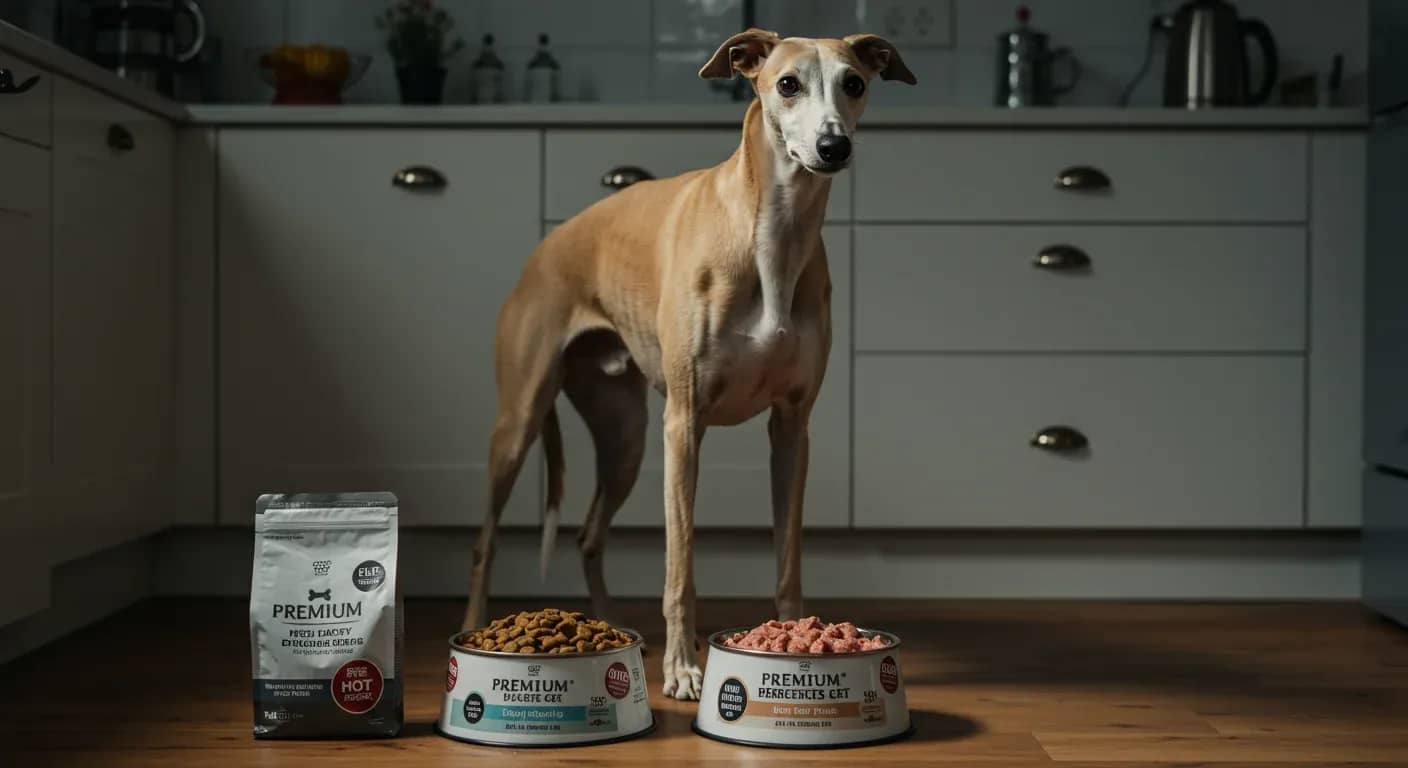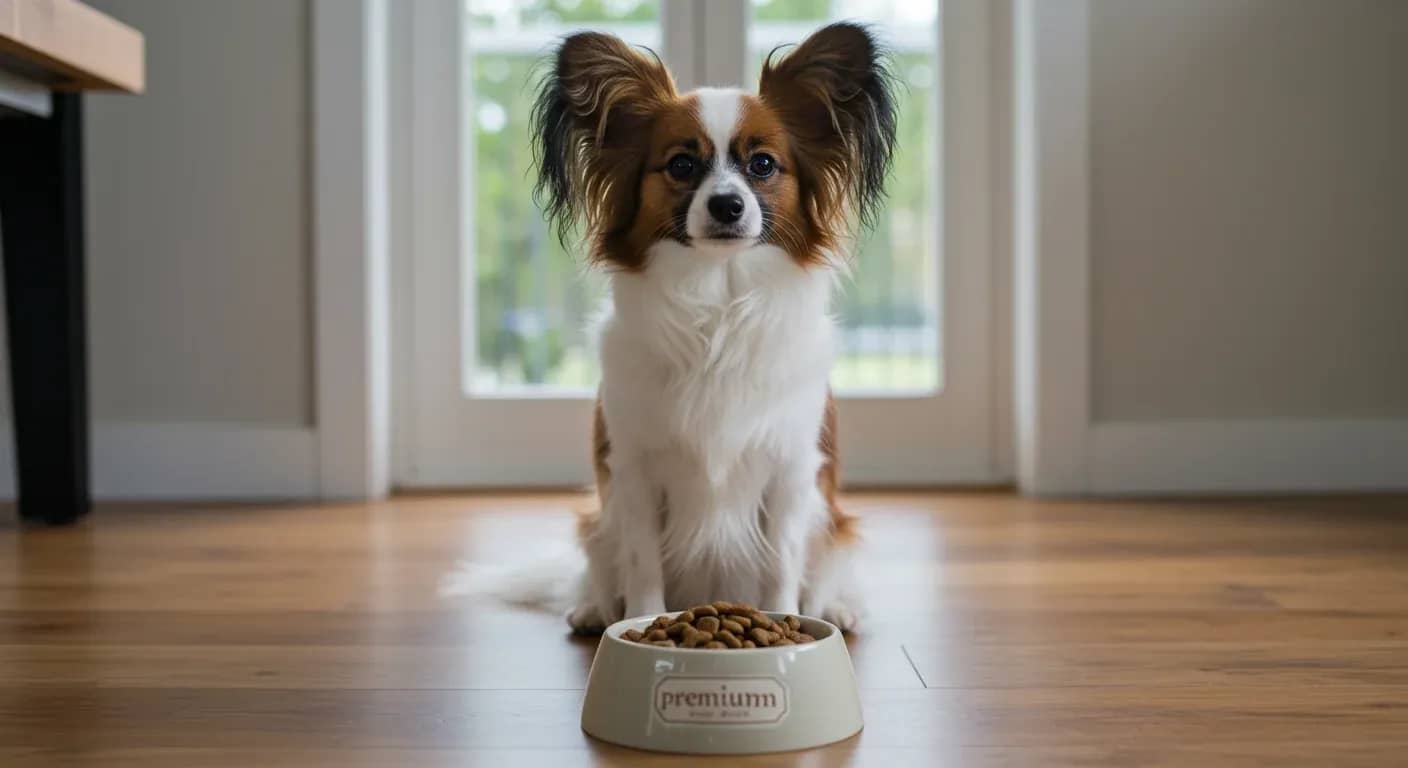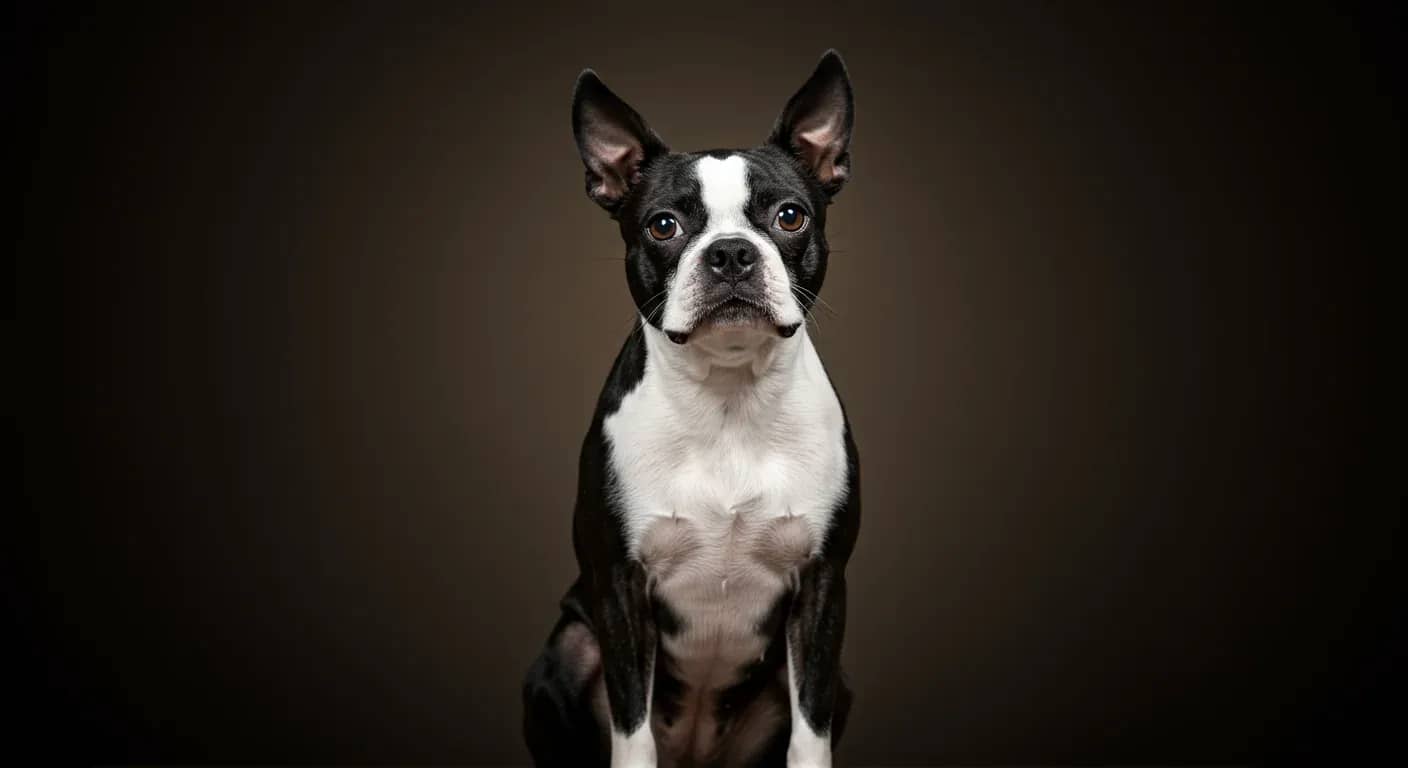At a glance
- Greyhounds should look naturally lean with a few ribs and hip bones slightly visible, but not emaciated
- These dogs need more calories per kilogram than many breeds, typically 1,350-2,832 calories daily depending on size
- High-protein, moderate-fat diets work best, avoiding supermarket brands with fillers
- Weekly weight monitoring and body condition scoring help catch changes early
Understanding your Greyhound's unique body shape

Many Greyhound owners worry when they first see their dog's naturally lean physique. These sighthounds are built differently from other breeds, with deep chests, tucked abdomens, and prominent bone structure that can look concerning to new owners.
A healthy weight Greyhound should have a few vertebrae, one or two ribs, and just a hint of hip bones visible. This might seem too thin compared to other breeds, but it's perfectly normal. If you cannot see or feel the hip bones at all, your dog may be carrying too much weight. Conversely, if the ribs and spine appear overly prominent, your dog might be underweight.
Research shows that these dogs can gain or lose weight quickly, making regular monitoring essential. Your hands are often more reliable than your eyes for assessment. Run your hands along your dog's ribcage and spine weekly to establish what normal feels like for your individual dog.
Calculating the right calories for your dog
Greyhounds require more calories per kilogram than many other breeds, especially when active. A 23-kilogram dog typically needs about 1,350 calories per day to maintain weight, while a larger 54-kilogram dog may need up to 2,832 calories. These numbers vary significantly based on age, activity level, and individual metabolism.
The key is accounting for everything that goes into your dog's mouth. Treats, table scraps, and training rewards all count toward daily caloric intake. Many owners underestimate how quickly these extras add up, leading to gradual weight gain over months.
Start by measuring your dog's current food intake for a week, including all extras. Most dogs do well with their daily portion split into two meals, typically ranging from 1.5 to 3 cups depending on the food type and your dog's size. Adjust portions based on your dog's body condition rather than strictly following feeding guidelines on packages.
Choosing the right food for optimal weight
Quality matters significantly when selecting food for weight management. High-protein, lower-fat kibble designed for large, active breeds typically works well for pet Greyhounds. Research indicates these dogs need diets with 20-45% protein and 40-50% fat content, plus essential vitamins and minerals.
Avoid supermarket brands and tinned foods high in fillers like corn and soy. These provide empty calories without nutritional density. For detailed guidance on selecting quality nutrition, our comprehensive food guide for Greyhounds covers protein requirements and feeding guidelines. Group 4 high-energy complete feeds, for example, provide 400 kcal with 25-30% protein and 20-25% fat per 100 grams. A 30-kilogram dog would need 350-400 grams daily of this type of food.
If you're considering raw diets, be aware that protein and fat content can vary significantly between batches. You'll need to supplement with calcium and phosphorus to support bone health, and the preparation time and cost are typically higher than quality commercial feeds.
Exercise needs and weight management

Remember that these dogs are sprinters, not marathon runners. They need regular, moderate exercise through daily walks and occasional sprints in secure areas, but excessive exercise can lead to injury rather than better weight control.
Adjust food intake based on activity changes. Less active pets need fewer calories, while increasing exercise intensity and duration can stimulate appetite and muscle growth in underweight dogs. For safe exercise routines and training tips, learn more about Greyhound running requirements. Most pet Greyhounds do well with two moderate walks daily plus some free running time several times per week.
Watch for signs that exercise is helping or hindering weight goals. Some dogs become ravenous after increased activity, potentially negating the caloric benefits. Others lose interest in food when over-exercised or stressed.
Addressing weight problems effectively
Overweight dogs show loss of visible bone structure, difficulty feeling ribs and hips through the skin, and often reduced energy levels. The solution involves reducing calorie intake, cutting back on treats, increasing moderate exercise, and potentially switching to a lower-fat diet.
Underweight dogs display prominent ribs, spine, and hip bones along with lack of muscle tone. Address this by increasing meal frequency to two or more smaller meals daily, adding calorie-dense foods like tripe or beef trimmings, ensuring proper hydration, and ruling out parasites or illness.
Most dogs respond to dietary changes within 2-3 weeks. If you don't see progress in this timeframe, or if weight changes seem sudden or unexplained, consult your veterinarian. Sometimes underlying medical conditions affect weight regardless of diet and exercise changes.
Monitoring and maintaining long-term success
Weekly weight checks using both scales and hands-on body condition scoring catch problems early. Your dog's racing weight, if known, can serve as a useful reference point for retired racers, though some dogs naturally carry slightly more weight in retirement.
Don't forget dental health in your weight management plan. These dogs are prone to dental disease, which can affect eating habits. Include raw, meaty bones or dental chews in your routine to promote oral health while providing mental stimulation.
Adjust your approach gradually. Sudden dietary changes can cause digestive upset, potentially creating new problems while trying to solve weight issues. Always ensure access to fresh water, as dehydration can mask weight problems and affect overall health.
Most importantly, seek veterinary advice if your dog's weight changes rapidly without explanation, if you notice signs of illness like lethargy or digestive issues, or if you're unsure about dietary choices or supplements. Professional guidance helps ensure your approach supports your dog's individual needs and long-term health.



